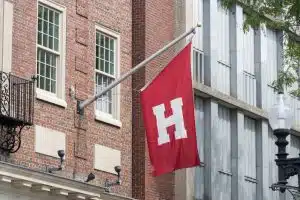What Is Rolling Admission and When Is the Best Time to Apply?
Beginning your college adventure is an exciting step, but navigating the world of college admissions can be quite bewildering. Rolling admission, on the other hand, is a hidden gem of a system that can be advantageous—if you understand how it works.
In this blog, we’ll unravel the concept of rolling admissions and provide you with practical strategies for college applications, making the most of this adaptable admission approach.
Understanding Rolling Admission
The rolling admission process works differently than regular, early action, or early decision admissions. It does not have strict deadlines and offers more flexibility.
Rolling admission is a popular method used by many colleges and universities to manage their admissions process. It allows for a continuous review of applications and offers a prolonged decision-making window for applicants. This process is designed to provide flexibility and convenience to both students and institutions.
The Basics of Rolling Admission
In a rolling admission system, colleges review applications as they come in and make admission decisions throughout the admission cycle. This means that there are no specific deadlines for submitting applications. Instead, applications are accepted and reviewed on a rolling basis, usually starting from a certain date and continuing until all spaces in the upcoming class are filled.
One of the advantages of rolling admission is that applicants receive a decision within a few weeks of submitting a complete application. This allows students to have a faster response time compared to other admission processes. It also provides ample time for applicants to consider their options and make an informed decision.
How Rolling Admission Differs from Regular Admission
Unlike the specific deadlines set by regular admissions, rolling admission allows applications to be submitted at any time within a large window. This means that students have the flexibility to apply when they feel ready rather than being restricted by a fixed deadline.
In regular admission, colleges typically have a specific deadline, after which new applications will not be accepted. This can create a sense of urgency for students to complete their applications and submit them before the deadline. However, with rolling admission, there is no such pressure. Students can take their time to prepare their application and submit it when they feel it is ready.
Another difference between rolling admission and regular admission is the timing of admission decisions. Regular admission colleges usually release their admission decisions all at once, on a specific date. This means that applicants have to wait until that date to find out if they have been accepted or not.
On the other hand, rolling admissions decisions are sent out on an ongoing basis. This means that early applicants to rolling admission schools often receive their decisions earlier than those who apply later in the cycle.
In conclusion, rolling admission offers a flexible and convenient option for students who want to apply to colleges and universities. It allows for a continuous review of applications and provides faster response times.
Whether you choose to apply through rolling admission or another method, it is important to carefully consider your options and make an informed decision that aligns with your academic and personal goals.
The Pros and Cons of Rolling Admission
Like every system, rolling admission has its advantages and disadvantages. Understanding both can help you navigate your application process more effectively.
Rolling admission is a popular method used by many colleges and universities to admit students throughout the year. It offers a flexible timeline for applicants, allowing them to submit their applications within a broad window of time.
This flexibility can be a significant advantage for students who need more time to put their best foot forward. Unlike regular admission with strict deadlines, rolling admission provides a sense of relief and reduces the stress associated with the college application process.
One of the major advantages of rolling admission is the quick decision-making process. Unlike other admission systems where you might have to wait for months to hear back from colleges, rolling admission offers a faster response.
This means that you won’t be left in limbo, anxiously waiting for an acceptance or rejection letter. Instead, you can expect to receive a decision relatively quickly after submitting your application.
Moreover, applying early in the rolling admission process can increase your chances of acceptance. As spaces are filled continuously, there is less competition in the early stages. By submitting your application early, you demonstrate your enthusiasm and commitment to the college, which can work in your favor.
Additionally, early acceptance allows you to start preparing for college life sooner, giving you ample time to plan your transition and make necessary arrangements.
However, there are potential drawbacks to consider when it comes to rolling admission. One of the main concerns is the possibility of qualified applicants being rejected simply because they applied later in the process when spots may already be filled.
While rolling admission offers flexibility, it also means that colleges may have limited availability as time goes on. Therefore, it’s crucial to be aware of application deadlines and submit your materials as early as possible to maximize your chances of acceptance.
Another disadvantage of rolling admission is the potential impact on financial aid and scholarships. Some colleges and universities distribute financial aid and scholarships on a first-come, first-served basis. This means that late applicants may receive less financial aid or, in some cases, none at all.
If you rely on financial assistance to fund your education, it’s essential to be mindful of the application deadlines and prioritize submitting your materials early to maximize your eligibility for financial aid.
In conclusion, rolling admission offers many advantages, including reduced stress, quick decision-making, and increased flexibility. However, it’s important to be aware of the potential drawbacks, such as limited availability and potential impact on financial aid. By understanding the pros and cons of rolling admission, you can make informed decisions and navigate the application process more effectively.
Determining the Best Time to Apply
Now that you know what rolling admission is and how it operates, let’s dive deeper into the best time to apply under this system.
When it comes to rolling admission, timing can play a crucial role in your chances of getting accepted. Applying early can have its benefits, as most colleges fill their spots on an ongoing basis. By submitting your application as early as possible, you will be competing with fewer applicants, increasing your odds of being accepted.
But what exactly are the benefits of applying early? Well, for starters, it allows you more time to plan for college once you receive your acceptance letter.
Early acceptance can be a game-changer when it comes to housing assignments, class schedule planning, and other aspects of transitioning to college life. You’ll have the advantage of securing your spot and getting a head start on all the necessary preparations.
On the other hand, there are risks associated with submitting a late application. As time goes by, the availability of positions decreases, making it more challenging to secure a spot. Even if you are highly qualified, the competition becomes fiercer as the number of available spots dwindles. This could significantly affect your chances of admission.
Another important consideration is financial aid. Many colleges offer financial support to early applicants, but late applications may miss out on these opportunities. If you require financial assistance to fund your education, applying late might put you at a disadvantage.
It’s crucial to be aware of the deadlines for both admissions and financial aid applications to ensure you don’t miss out on any potential assistance.
In conclusion, applying early in the rolling admission process can give you a competitive edge and provide you with more time to plan for college life. However, it’s important to weigh the risks of applying late, such as limited availability of spots and potential missed financial aid opportunities. Ultimately, the best time to apply will depend on your individual circumstances and priorities.
Colleges in the US with Rolling Admissions
Choosing the right college is a crucial step in your academic journey, and it’s important to consider the admission process. While some colleges have strict application deadlines, others offer rolling admissions, providing flexibility for applicants. Here’s a guide to colleges in the US with rolling admissions, sorted by categories to help you find the best fit for your interests and career goals.
Public Universities with Rolling Admissions
- City University of New York—Baruch College
- University of Pittsburgh
- Penn State University
- Purdue University
Liberal Arts Colleges with Rolling Admissions
- Ripon College
- Warren Wilson College
- Eckerd College
STEM Universities with Rolling Admissions
- Milwaukee School of Engineering (MSOE)
- Florida Institute of Technology (FIT)
- New Jersey Institute of Technology (NJIT)
These colleges offer rolling admissions, allowing you to apply at your convenience, making it easier to meet their admission deadlines. Whether you’re interested in business, liberal arts, or STEM fields, you can find a college that suits your goals.
Tips for Applying Under Rolling Admission
Smart timing and preparation are crucial for success in the rolling admission process. Here are some additional tips to help you navigate the application process:
Preparing Your Application
Ensure that your application is complete, polished, and represents you well. A hastily done application could impact your chances of selection negatively. Take the time to carefully review and revise your application before submitting it.
When preparing your application, it’s important to showcase your strengths and accomplishments. Highlight any relevant experiences, extracurricular activities, or leadership roles that demonstrate your potential as a student. Admissions officers are looking for well-rounded individuals who will contribute to the campus community.
In addition to completing the required sections of the application, consider including an optional essay or personal statement. This gives you an opportunity to share more about yourself and your goals, allowing the admissions committee to gain a deeper understanding of who you are as a person.
Include all required documentation, such as letters of recommendation, transcripts, and standardized test scores. It’s important to request these materials well in advance to ensure they arrive on time. Double-check that everything is included and properly formatted before you submit.
Timing Your Submission
The ideal timing for application submission varies depending on the specifics of the college and program. As a rule of thumb, applying earlier usually drives better results as there is less competition. However, it’s important to find the right balance between submitting early and submitting a well-prepared application.
Before submitting your application, take the time to research the college’s rolling admission timeline. Some colleges have specific deadlines or priority dates that you should be aware of. By understanding the timeline, you can plan accordingly and ensure that your application is submitted in a timely manner.
While it’s advantageous to submit your application early, don’t rush the process. Take the time to carefully review your application and make any necessary edits or revisions. It’s better to submit a strong and well-prepared application slightly later than to rush and submit a subpar one.
Remember, the rolling admission process allows colleges to review applications as they are received, so it’s never too late to submit your application. However, keep in mind that some colleges may have limited spots available, so it’s in your best interest to submit your application as early as possible.
In conclusion, applying under rolling admission can be a great opportunity to secure your spot at your desired college. By preparing a strong application and submitting it in a timely manner, you increase your chances of being admitted. Good luck!
Conclusion: Is Rolling Admission Right for You?
Ultimately, the choice to apply through rolling admission depends on your individual needs and timeline. If you need flexibility and can submit a strong application early in the admission cycle, rolling admission may serve you well.
Remember, choosing when and where to apply for college requires careful consideration. With the above understanding, you’re now better equipped to navigate the world of rolling admissions, making informed decisions that could shape your academic future.
Having all the necessary information is important before choosing any course of action. AdmissionSight is always here to assist you with any questions or concerns. We have more than ten years of expertise assisting students in successfully navigating the challenging admissions process.
Consult with AdmissionSight and find out what we can do to help you get into the school of your choice by ensuring that you are sufficiently aware and well-prepared for the application process.









































